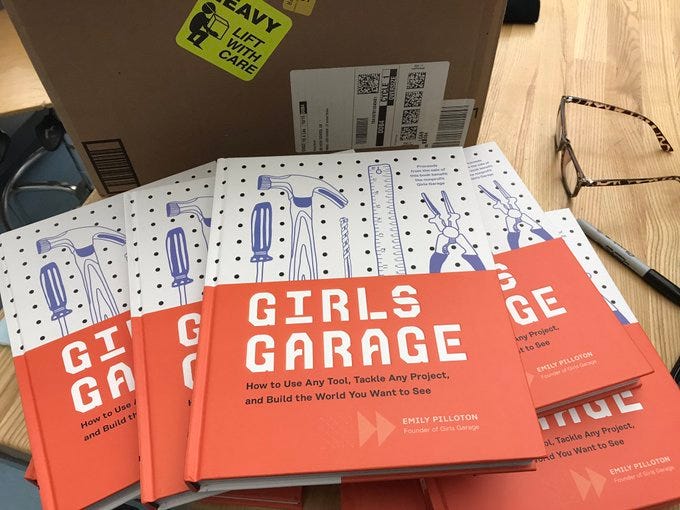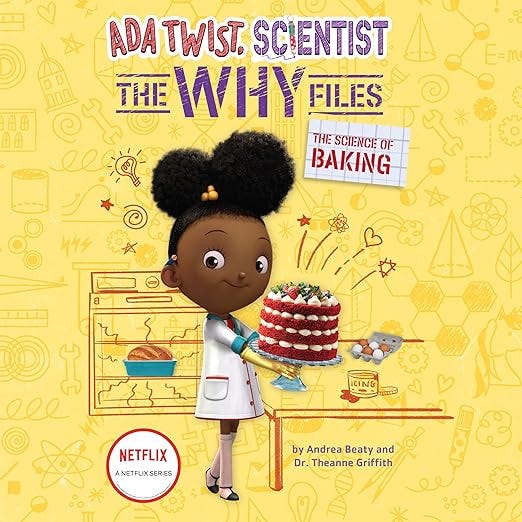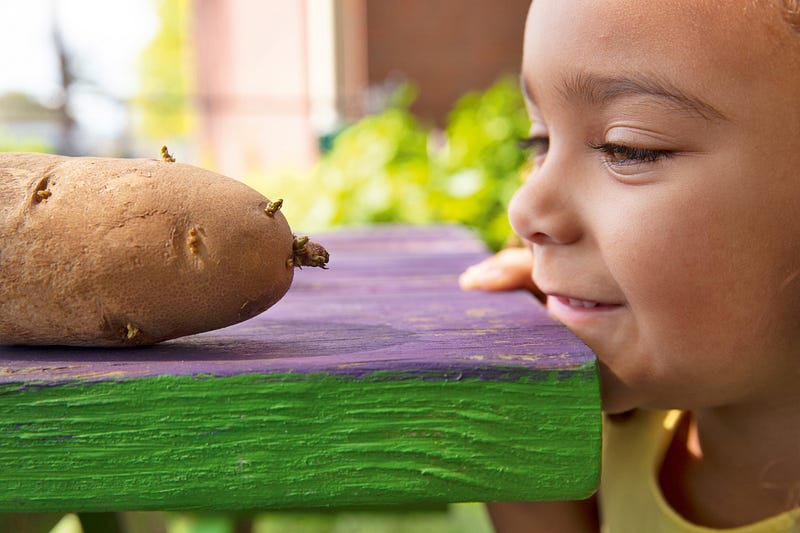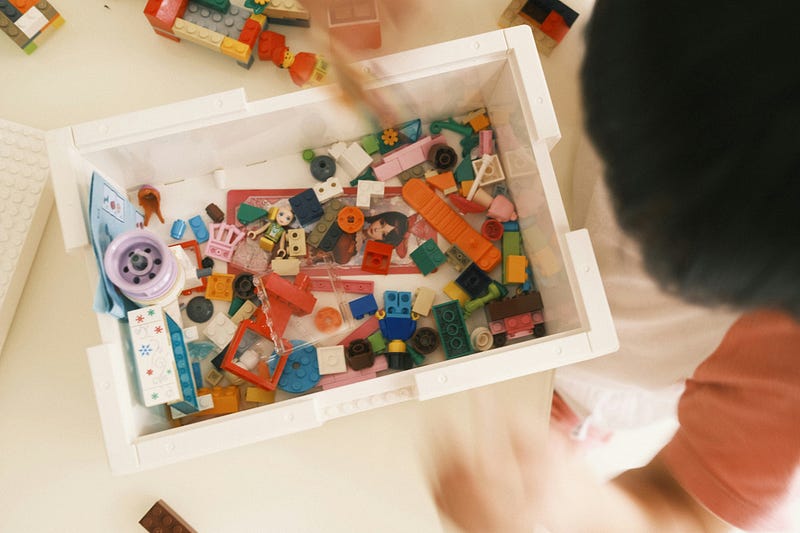Before you start your holiday shopping this year, we encourage you to think outside the box. Don’t let stereotypes limit your shopping lists and imagination. Toys and games in science, technology, engineering, and mathematics (STEM) are marketed to boys. Yet when given the chance, girls enjoy and benefit from playing with STEM toys and games.
Here are 10 ideas that support girls’ creativity and confidence in STEM and expand their options. Our list puts priority on gifts that are affordable and experiences that are free. We encourage you to support the small businesses and STEM institutions in your community.
1. Break down barriers with building toys.
LEGOs are fun and build spatial skills. We especially like open-ended toys like classic LEGO sets, wooden blocks, Tinker Toys, and MAGNA-TILES where girls create their own designs instead of complete one-and-done projects where they follow directions.
Take a moment to listen to Choosing Toys to Inspire Young Girls in STEM, a webinar hosted by the National Girls Collaborative Project (NGCP). You will learn about the latest research, resources, and new toys to support STEM play with young girls (and all young children). Emily Coyle points out that while building stereotypes is a normal part of early development, adults can help disrupt them with their language and actions. For more fun ideas like building a Marshmallow Sculpture or Making Rainbow Milk, check out the STEAM Playbook created by the Genius of Play in partnership with NGCP. We like how every play idea includes tips for making an activity simpler or more complex.
2. Build confidence with tools.
Girls like to make things and work with their hands when given the chance. Get a girl her own set of tools so that she can build a bookshelf, design a community project, or repair a bike tire. Working with tools helps empower girls and build their confidence in STEM.
In support of a girl working with tools, use comments like “Let’s do engineering and science” rather than “Let’s be engineers and scientists.” Using more action-focused language helps build girls’ interest in STEM and encourages them to persist after a setback. Learn more in this post by Amanda Sullivan for NGCP.
Look for a program in your community like Girls Build and Girls Garage where girls build in the company of girls. Find how-to projects and inspiring stories from real-world builder girls and women in Girls Garage: How to Use Any Tool, Tackle Any Project, and Build the World You Want to See. A Mighty Girl offers a selection of building toys and toolsets.
3. Close the gender gap in computer science.
You don’t have to spend a lot to inspire a future computer scientist who makes breakthroughs in Artificial Intelligence or designs Apps for social good. You can find free resources from organizations that support girls in technology.
GoldieBlox and Black Girls Code partnered to create Code Along, a virtual coding academy where young influencers teach girls how to code in a fun, vlog-style format. Girls can choose from projects that include making an interactive game, coding animated art, and making a website. Girls Who Code offers free activities for girls of all ages. Explore Code at Home and Girls Who Code Clubs for opportunities in your community.
A study of parent support found that parents provided resources to support their sons’ tech interests at an earlier age and offered more help when the projects were complicated. These stereotypes negatively impact girls’ motivation and sense of belonging in computer science. Research explains that stereotypes from the media and toy industry bias adults toward believing that technology is of greater interest to boys. The good news is that caregivers can send girls a different message about computer science with toys and games, afterschool programs, and summer camps. For more ideas that are informed by research, look at the National Center for Women and Information Technology’s Top 10 Ways Families Can Encourage Girls in Computer Science.
4. Inspire a love of reading and STEM.
Reading together can foster a lifelong love of learning. When you combine reading a book with working on a design challenge, the results are STEMtastic. You can find inspiration in this fun read about Playful Engineering by TERC. Check out the Tinkering Library from the Exploratorium for more playful STEM ideas. We found inspiration in Carrot and Pea and accompanying activities for making a slide, tower, and seesaw and exploring slopes and ramps.
A Mighty Girl offers an expansive collection of science and technology books about girls and women who love STEM. Ask your child’s science teacher or the children’s librarian at your public library for their suggestions for books that build on your child’s interests.
For more STEM books, check out The 2024 AAAS and Subaru for Excellence Finalist List for Children’s Science Books. We are excited to see The Science of Baking (Ada Twist, Scientist: The Why Files #3) by one of our favorite children’s authors, Andrea Beaty, on this list.
5. Play with puzzles and learn to persist.
Spatial skills help in our everyday lives as we travel a new route, load the dishwasher, and master tasks that come with “some assembly required.” Puzzles help children learn spatial skills and build their confidence in working through challenges. Look for puzzles that are age-appropriate with just enough pieces to be interesting without overwhelming. As your child gets more experienced and confident, introduce slightly more challenging puzzles and support the effort needed to stick with completing the puzzle. Together you can model and practice skills like taking breaks, trying different strategies, and not giving up — skills that help in school and life.
We love the ideas in Susan Levine’s blog, Puzzle Play. Levine reminds us to praise effort, which encourages a growth mindset. You’ll find ideas for making your own puzzles — a cardboard box, magazine, or a piece of scrap paper can be cut into pieces and put back together as puzzles. While there are some gender differences in spatial skills favoring boys, spatial skills can be learned with experiences shared in this blog.
6. Grow, observe, and explore.
Don’t let wintertime hold you back from gardening. With a little imagination, you can introduce your child to the joys of growing. Check out fun ideas in Winter Gardening Activities by Pamela Hubbard from Penn State Extension. Together, you can sprout seeds from zucchini, beans, cucumbers, and broccoli. Hubbard includes the idea of growing Venus Flytraps. Our family had years of enjoyment and wonder caring for these unusual, insect-eating plants.
Not quite ready for an insect-eating plant? Start simple and grow an avocado plant from a pit, following step-by-step instructions from Instructables. This activity is fun and educational, and it usually takes only two to six weeks for the pit to sprout. We recommend Garden Together by Jane Hirschi and the educators at CitySprouts for more ideas. The 25 activities in this book are simple to support and revolve around themes of plant, grow, eat, and discover. They are a great way to bring generations together to watch a seed or plant grow.
As your child watches her seed or plant grow, she can observe it up close with a Foldscope, a paper microscope that combines low-cost materials with precision optics. She can check out plants, insects, and countless other objects and enhance her powers of observation. We love this message from the founders of Foldscope. “We dream of a world where every child carries a microscope in their pocket.”
7. Bring joy to math.
Set a date to make family recipes and celebrate your family’s heritage. Invite relatives to share their favorite recipes. You can find STEM cooking and baking projects at Bedtime Math. For Bedtime Math founder, Laura Overdeck, “math was an ingredient in everyday fun activities around the house. Her mom introduced her early to baking, which was a yummy way to count and use fractions.” What better way to practice math than while measuring and transforming ingredients into tasty creations.
For books that weave math into meaningful stories check out the Storytelling Math Project based at TERC. The combination of stories and hands-on activities make it easy for families to explore everyday math together.
Math anxiety can hold back children and adults from learning and using math in our everyday lives. It doesn’t have to be. One of the best reads on overcoming the fear of math is Family Math: Facing the Mathephant in the Room, a blog by Rebecca Honig and Françoise Lartigue for ParentPowered.
8. Reimagine holiday gift-giving traditions. Instead of buying new things, give the gift of your time and attention.
What inspires a lifelong interest in STEM? It’s not rocket science! It’s the gift of attention from parents and caregivers. Be present in the moment and invite your girl to talk about her ideas and dreams. Listen and show your interest with follow-up questions that invite her to expand upon her ideas.
After toys are unwrapped, actively engage by getting on the floor and playing alongside your child. Did you know that it’s your encouragement that matters most in encouraging girls in STEM? Encouragement takes the form of simple acts like asking a question, inviting a girl to show you what she’s doing, and asking her to teach you a new skill. Within these interactions, share the message, “You can do science” and help girls imagine they can be a scientist and importantly encourage them to persist.
9. Think outside…or inside the box.
Save cardboard from gifts and deliveries. Brainstorm, design, measure (and redesign and measure again), and bring new life to an old box. Instructables has lots of ideas for making games, puzzles, and art with cardboard. We love the picture book, Not a Box, by Antoinette Portis in which a rabbit shows that a box will go as far as the imagination allows — from a mountain to a rocket ship. Our family reimagined a box from a large appliance into a playhouse. Thirty-five years later we are building new creations with our grandchildren. Start your family’s tradition of building with cardboard.
Try the Cardboard Challenge from Camp GoldieBlox and see if your family can make five different creations. This Challenge is one of many hands-on projects and videos in the IF/THEN role model collection. Encourage your child to use her imagination to reduce your family’s use of cardboard.
You might also consider taking toys out of their boxes before giving them to your child. Boxes often come with subtle — and sometimes not so subtle — messages about who STEM toys and games are designed for. These can influence how children play with them.
10. Plan a family visit to a park, zoo, aquarium, or science or technology museum.
Support these community assets that entertain and educate with their programs and exhibits. Plan in advance and invite your child to chart your visit. Did you know that parents explain exhibits to sons more than to daughters during trips to the museum? With this insight from research, you can be more aware of giving girls their fair share of time and attention on your visit.
Check out opportunities in your community for days when admission is free or reduced. There may also be a museum pass program at your public library where you can get free and discounted tickets to local museums and cultural institutions.
You can find STEM activities created by museums to do at home. Here are some to check out:
- Science at Home from the Museum of Science and Industry includes fun projects making a Worm Farm, Egg Carton Nursery, and Slime.
- Science @ Home from the California Academy of Sciences offers activity packs with videos, hands-on crafts, and experiments about snakes, sharks, and swamps.
- Engineering is Elementary from the Museum of Science offers engineering and computer science activities for families. We like the At Home Activities and On the Go Activities for trips to the grocery store or laundromat.
###
Linda Kekelis: I am an advisor for The Family Engagement Project for STEM Next Opportunity Fund. I have devoted my life’s work to supporting families, educators, and role models in encouraging girls in STEM. I enjoy getting down on the floor with my granddaughter and building with LEGOs and blocks, playing with puzzles, and looking for bugs, leaves, and rocks during scavenger hunts on our walks through the neighborhood. Shh. It’s a secret; this holiday I am getting my granddaughter, Chelsea, a flashlight, which she has been asking for so we can go on nighttime walks of wonder and a Foldscope.
Teresa Drew: I am the Deputy Director of STEM Next Opportunity Fund and leading the Million Girls Moonshot initiative: Reimagining who can engineer, who can build and who can invent. As a young girl growing up in a rural mountain community, summer meant long days of exploring and adventuring where the sweet smell of the riverbed met fresh green grass. Moments in time that spurred a lifetime of curiosity and a love of nature. If all young people have the opportunity to get a little dirt on their hands and between their toes, our world will be a better place for all.
With the Million Girls Moonshot, STEM Next Opportunity Fund is re-imagining who can engineer, who can build, who can invent. It is inspiring the next generation of innovators by engaging millions more girls in STEM opportunities by 2025. Spread the word to role models, educators, and families. Encourage a girl to explore STEM opportunities like the Million Girls Moonshot Flight Crew. Make a donation and join the movement.






